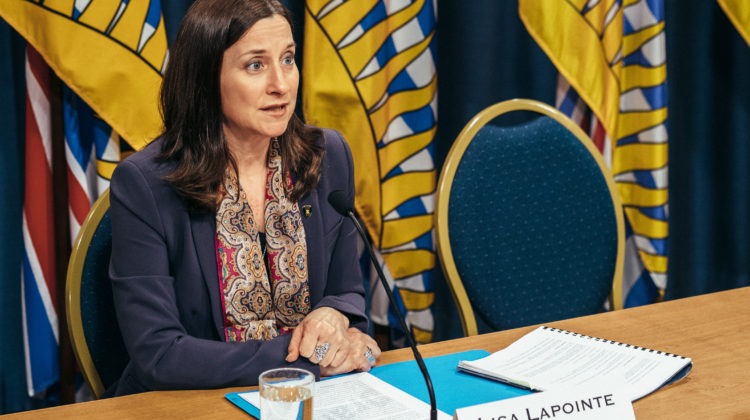BC has gone 16 consecutive months where at least 100 people have passed away due to illicit drug use.
So far this year, 1,011 suspected illicit drug deaths have occurred between January and June of this year with 65 in Northern Health.
In an interview with Vista Radio, Chief Coroner Lisa Lapointe told Vista Radio the criminalized philosophy in dealing with people who use substances hasn’t worked and a new approach is badly needed.
“What needs to change is a big shift, a massive shift on how we treat those who experience problematic substance use or are dependent on substances. For decades, this was criminalized, people were punished and that has not been effective in any way, shape, or form.”
Lapointe adds this approach from law enforcement has been a boon for drug traffickers who have taken advantage of those who are most vulnerable on this subject.
Simply put, a bigger emphasis needs to be on detox and recovery services as well as a safe drug supply.
Lapointe stated some of this can be accomplished by introducing regulated facilities that often report on treatment methods that are working or not working.
“If you have a life-threatening medical condition you can seek medical treatment that will help you to wellness that is evidence-based. We don’t have that in BC for those experiencing problematic substance use.”
“And really, this would be a benefit for everybody. This way, we would see fewer deaths, we’ll see less suffering and social disorder and we will reduce the grief that families and communities feel when you lose a loved one because everybody in this province has lost somebody.”
The public health emergency, which has been declared since 2016 continues to take its toll on our older generation.
According to the Coroners Service, 40% of all illicit drug deaths in BC this year are among those 50 years of age and up.
In addition, 267 residents between the ages of 50-59 have passed away from a drug overdose during the first six months of this year.
Last year, 393 people in this age demographic lost their lives after using these substances.
Lapointe is quick to mention problematic substance use is affecting all walks of life.
“What we are seeing is people who are using alone and dying alone. A lot of older men are dying alone whether that is due to loneliness from the pandemic but the rate of death related to drug toxicity has been high for a number of years.”
“We have to recognize that problematic substance use is happening across all age groups and in all communities in our province.”
When asked if the current harm reduction strategy is working despite the skyrocketing number of deaths, Lapointe believes it’s still a small part of the puzzle.
“We need to meet people where they are. It may be easy to say stop using but that’s not realistic. People who are substance dependent need to use the substance otherwise they will get very sick. It’s not a matter of getting people to stop it but it is a matter of reducing the harm for them and helping them to stabilize. Hopefully, at some point, they will be ready for treatment and they will be ready for recovery and the worst that would happen is that they are maintained on a substance that is safe.”
According to the Chief Coroner, BC is facing two major hurdles in order to achieve a safe supply.
In April, the province submitted a federal exemption request to decriminalize personal possession of drugs in the province.
Lapointe mentioned they are still waiting to hear back from Ottawa.
The other issue in obtaining a safe supply is more homegrown.
“Where we have a big problem is clinicians at this point, not in large numbers who are willing to prescribe safe supply. It’s important that it has to be medical people because this is a medical condition.”
“Nurse practitioners are undergoing training and a number of physicians have but we haven’t seen the numbers that we need that would be willing to prescribe in order for those using to have access to a safe supply, similar to like we would with any prescription.”
Northern Health has the second-highest drug toxicity rate out of all the health authorities in BC at 44.9 per 100,000 residents – just over a point behind Vancouver Coastal at 46.2.
In terms of the Health Service Delivery Area, the Northern Interior, which encompasses PG-Quesnel-Burns Lake and the Robson Valley has the sixth-highest drug toxicity death rate at 44.7.
Vancouver is a whopping 24 points ahead with a rate of 68.2.
Since a public health emergency was declared in 2016, 7,760 British Columbians have died from illicit drugs.
The detection rate of benzodiazepines has rapidly increased from 15% of samples in July of 2020 to 60% of samples as of May of this year.
Men have accounted for 80% of deaths in 2021.


